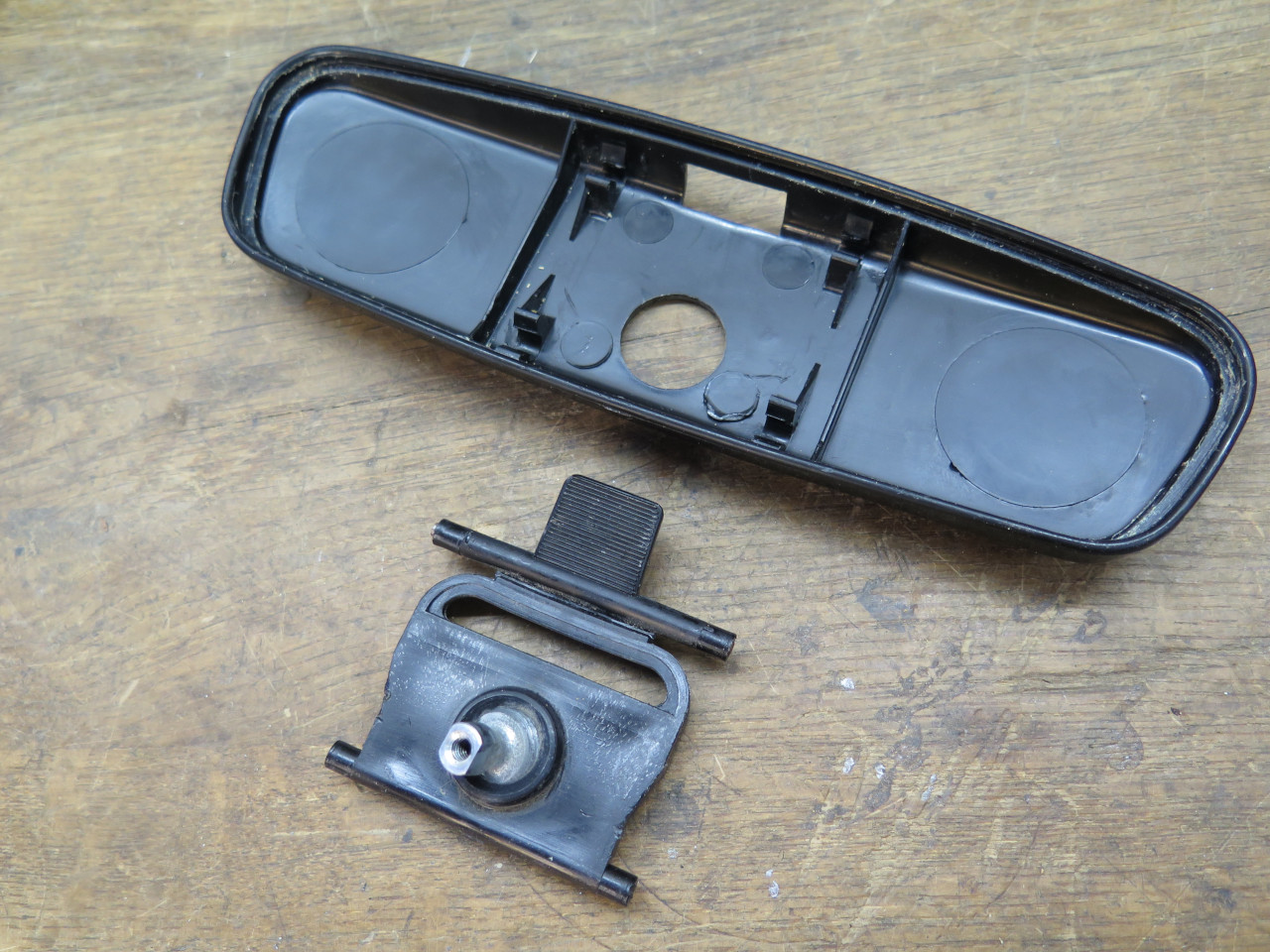To my other GT6 pages
April 2, 2023
Rear View Mirror
While waiting for warmer weather more conducive to working in the
garage, I'm reduced to working on some "trinket" projects like this
one. It's important, and does need attention, but probably isn't
as interesting as some others.
The rear view mirror in this car is one of those ubiquitous models found
on a wide variety of cars that either attaches to the windshield, or
hangs from the windshield frame. This one attaches to the frame,
and has the typical ball and socket provision for aiming the mirror
appropriately. It also has the "day/night" or "antiglare" feature,
activated by a little plastic tab on the lower edge.
My mirror was pretty crusty looking. The mirror glass itself
appeared to be OK, but the antiglare switch seemed to be stuck.


I wasn't really sure how to get the unit apart, or if it was even
possible. It turns out that the mirror glass is just held in the
body by a thin lip all around. It didn't really want to come out,
but finally did. The mirror glass had a paper backing which I
didn't disturb.


The plastic housing for the mirror held the antiglare mechanism.
It is a molded plastic piece that provides a socket for the adjusting
ball, holding it captive. It didn't appear to be glued together,
so I wonder if the piece was molded around the ball. The piece is
in two parts connected by a molded in "living hinge", which is just a
thin section part of the molding that can flex. Each part of the
piece is held in the housing by a pair of ears that snap into sockets in
the housing. This forms an "over-center" linkage that has two
stable states, actuated by the antiglare switch. Flipping the
switch tilts the housing by a few degrees.


The antiglare function works like this: The mirror (like all
mirrors, actually) has two reflecting surfaces--one is the silvered back
surface, and the other is the plain glass front surface. What is
special about these mirrors is that the two reflecting surfaces are not
parallel. The glass has a wedge-shaped cross section. In the
daytime, the mirror is adjusted so that the back silvered surface
reflects light from the rear window to the driver's eyes. At
night, the glass is tilted back by a few degrees. This brings the
front glass surface into the plane that reflects light from the rear
window to the driver. The mirrored surface is now facing more
upward, so it reflects light from the headliner, which is comparatively
dark, to the driver. The effect is that the reflection from the
rear is less efficient, and so is dimmer.

The problem with my mirror was that some crud had built up around the
attachment points of the tilt mechanism, keeping it from snapping to
position. It was easily cleaned, lubed, and re-installed.
Then popped the mirror back in.


With all of that out of the way, I turned to the remaining parts.
The little stalk that mounts the mirror was dirty, but when I tried to
clean it, the paint just flaked off. No problem--just blasted the
remaining paint off, detailed it a bit, and powder coated it.



Cleaned up the other plastic mounting parts and screws, and good as new now.


This was a silly little project. It took maybe a couple of hours
including the powder coat curing, and didn't cost anything.
Comments to Ed at elhollin1@yahoo.com
To my other GT6 pages